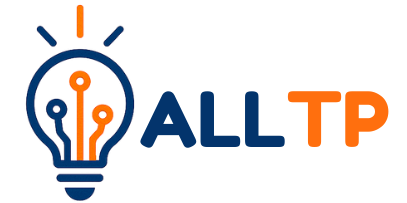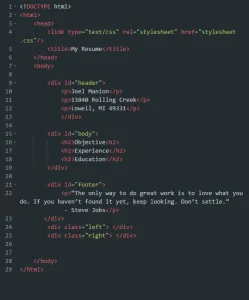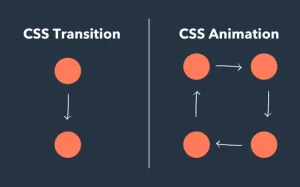In today’s fast-changing world, the demands on schools are evolving faster than ever before. Technology, globalization, and shifting career landscapes mean that the skills needed for success are no longer limited to reading, writing, and arithmetic. Parents, employers, and entire communities are looking to schools not just to educate, but to prepare students for an unpredictable future.
This is where All Things Programming comes in. Through its future-ready curriculum, designed to equip learners with critical thinking, creativity, collaboration, and technological literacy, it bridges the gap between traditional academics and the skills required in the 21st century.
It’s not about replacing core subjects. it’s about enhancing them with tools and knowledge that empower students to thrive beyond the classroom. To understand the broader impact of early digital education, explore Top 5 Benefits of Teaching Coding in Primary Schools
For schools, the message is clear: adapt now or risk falling behind. Institutions that embrace forward-thinking education will not only stay competitive but also strengthen their reputation, attract more students, and deliver better outcomes for every learner.
What Is a Future-Ready Curriculum?
A future-ready curriculum is more than just an updated syllabus; it’s a strategic approach to education that prepares students to succeed in the fast-changing, opportunity-filled world of the 21st century. It equips learners with both academic knowledge and the real-world skills they’ll need to navigate complex challenges and seize emerging opportunities.
At its core, a future-ready curriculum blends:
- Technology Integration – Leveraging digital tools and platforms to enhance learning and prepare students for tech-driven careers.
- Critical Thinking & Problem-Solving – Encouraging analytical skills to tackle real-world issues with creativity and logic.
- Creativity & Innovation – Inspiring students to think outside the box and create new solutions.
- Collaboration & Communication – Building teamwork skills and effective communication for diverse work environments.
In practice, this means moving beyond traditional textbooks to include hands-on, skills-based learning such as:
- Coding – Teaching students to think like programmers and innovators.
- Robotics – Combining engineering and problem-solving in an engaging way.
- STEM Projects – Integrating science, technology, engineering, and mathematics to solve real challenges.
- Financial Literacy – Equipping students to manage money and make informed economic decisions.
- Global Citizenship – Cultivating cultural awareness, empathy, and responsibility on a global scale.
By embracing these elements, schools like All Things Programming ensure their students aren’t just prepared for the next exam, they’re prepared for the next decade.
How a Future-Ready Curriculum Boosts Your School’s Reputation
a) Increased Enrollment
Today’s parents are more discerning than ever, actively seeking schools that go beyond traditional academics to prepare their children for the future. A curriculum that includes coding, STEM projects, and global awareness signals to families that your school is forward-thinking and committed to giving students a competitive edge.
Future-focused programs don’t just appeal to local families, they also attract international students and expatriate communities who value globally aligned education. Schools like All Things Programming that have embraced innovation often report steady growth in enrollment, as word spreads about their modern learning environment and success stories from students.
b) Enhanced Brand Recognition
Implementing a future-ready curriculum positions your school as a leader in progressive education. It tells the community and the wider education sector that you’re not simply keeping pace, but setting the pace.
This leadership sparks positive word-of-mouth, with parents sharing their children’s engaging projects and achievements both offline and on social media. Alumni and current students become natural ambassadors for your brand, showcasing your innovative approach. Over time, such visibility can earn your school recognition from educational bodies, awards programs, and community leaders, further cementing its reputation as a trusted, modern institution.
Affordability Without Compromise
One of the most common misconceptions about modern, future-ready education is that it comes with a high price tag. While advanced programs may sound costly, the reality is that schools can deliver cutting-edge learning without overburdening families financially.
By leveraging partnerships with technology providers, tapping into government or NGO grants, and adopting scalable teaching solutions such as shared resources and blended learning models, schools like All Things Programming can keep costs manageable while still offering high-quality programs. Initiatives like community tech drives, sponsorships, or collaborations with educational organizations also provide students with the tools they need, at little to no cost to the school or parents.
When affordability is built into your approach, your school becomes accessible to a wider range of families. This not only promotes diversity and inclusion but also strengthens your reputation as an institution committed to serving the entire community, not just those with the deepest pockets.
No Student Left Behind – Equity in Learning
A truly future-ready curriculum doesn’t just serve the top achievers; it ensures every student has the opportunity to thrive, regardless of their background or starting point. Equity in learning means removing barriers that could prevent some students from fully participating in modern education.
This begins with differentiated learning tools that adapt to various skill levels and learning styles, ensuring no child is overlooked. Inclusive teaching approaches, such as project-based learning and peer collaboration, allow students to contribute meaningfully in ways that suit their strengths.
To bridge the digital divide, All Things Programming provides shared devices, sets up computer labs, or arranges community technology hubs. Flexible learning models, such as rotating access to resources or using low-tech alternatives when necessary, ensure that students without personal devices or high-speed internet aren’t left behind. Teacher training and ongoing support further ensure that staff are equipped to guide every learner forward, regardless of circumstance.
When no student is left out, the school’s culture shifts toward collaboration, empathy, and shared success, qualities that strengthen both student outcomes and the institution’s reputation.
Better Student Outcomes
A future-ready curriculum directly translates into improved academic performance by engaging students with relevant, hands-on learning experiences. When lessons connect to real-world challenges, whether through coding projects, STEM experiments, or financial literacy workshops, students become more motivated, curious, and invested in their education.
But success goes beyond grades. These programs cultivate essential 21st-century skills like leadership, creativity, and adaptability, equipping students to navigate a rapidly changing world with confidence. Students learn how to collaborate effectively, think critically, and develop innovate abilities that are highly valued in both higher education and today’s job market.
By preparing learners not just to pass exams but to thrive in life and work, schools like All Things Programming set their students and themselves up for lasting success.
To see how this aligns with national education goals and why digital literacy is becoming essential for all learners, read Why Every Kenyan School Needs a Coding Program in 2025, it explains how schools can stay relevant in Kenya’s fast-evolving education system
Action Steps for Schools
Implementing a future-ready curriculum may seem like a big task, but with a strategic approach, schools can make the transition smooth and effective. Here are the key steps to get started:
- Conduct a Curriculum Audit: Begin by reviewing your current curriculum to identify gaps and opportunities where future-ready skills can be integrated. This helps focus efforts where they’ll have the most impact.
- Invest in Teacher Training and Upskilling: Equip your educators with the knowledge and confidence to deliver new content through workshops, online courses, and peer mentoring. Well-prepared teachers are crucial to successful implementation.
- Start with Pilot Programs: Before rolling out changes school-wide, test new lessons or projects with a small group of classes or grade levels. Pilots allow for feedback, adjustments, and early wins to build momentum.
- Engage the Community and Parents: Keep families and local stakeholders informed and involved. Their support strengthens buy-in and creates a collaborative environment where students can thrive.
To conclude, in an era defined by rapid change and innovation, a future-ready curriculum is no longer a luxury; it’s a necessity. By embracing forward-thinking education, schools like All Things Programming can enhance their reputation, attract more students, and ensure no learner is left behind. Beyond academic success, this approach cultivates vital skills that prepare students for the challenges and opportunities of tomorrow.
The schools that adapt today will be the leaders of tomorrow, shaping not just futures but entire communities. Now is the time to take the first step toward a brighter, more inclusive, and future-proof education for all.




